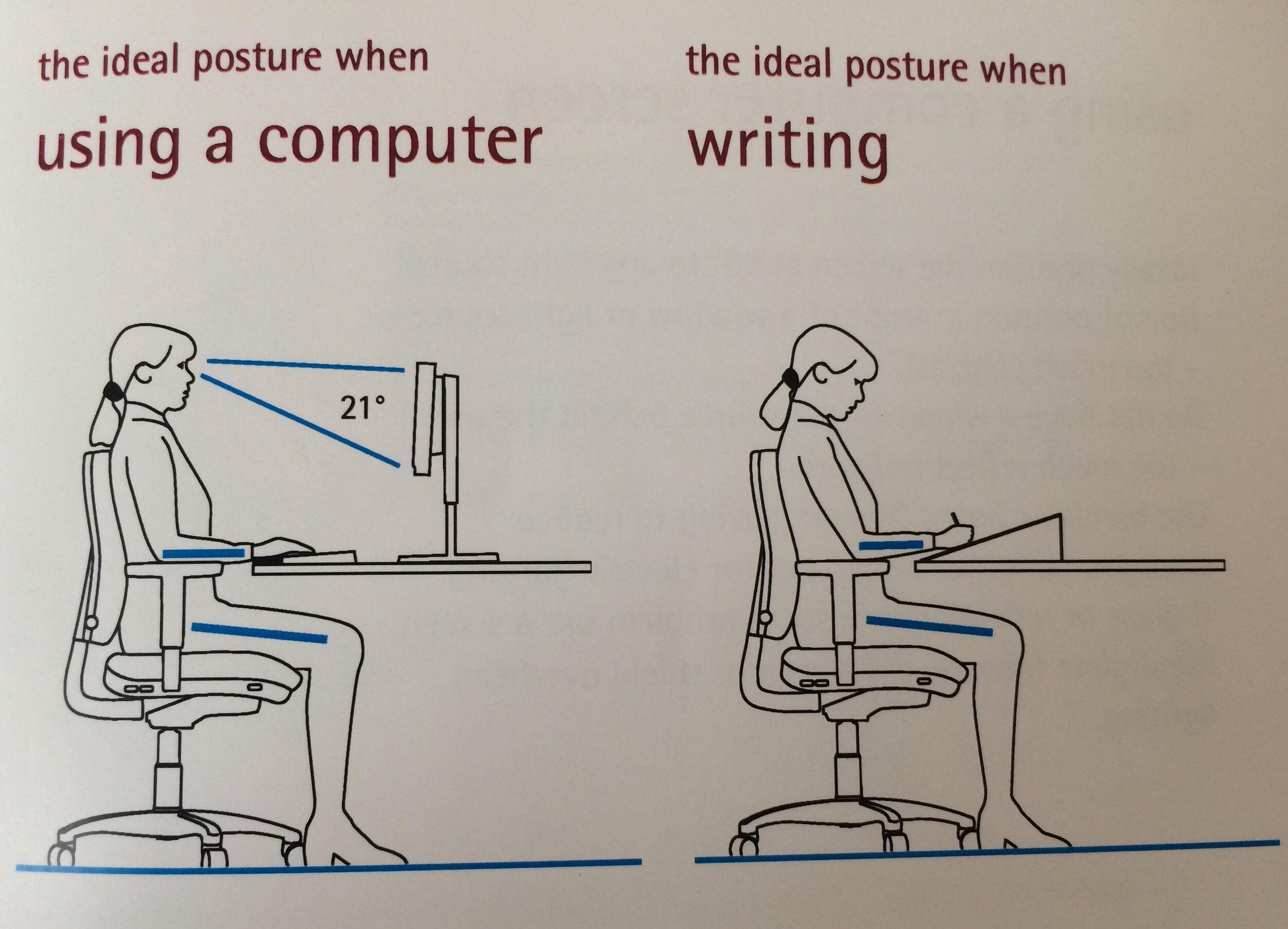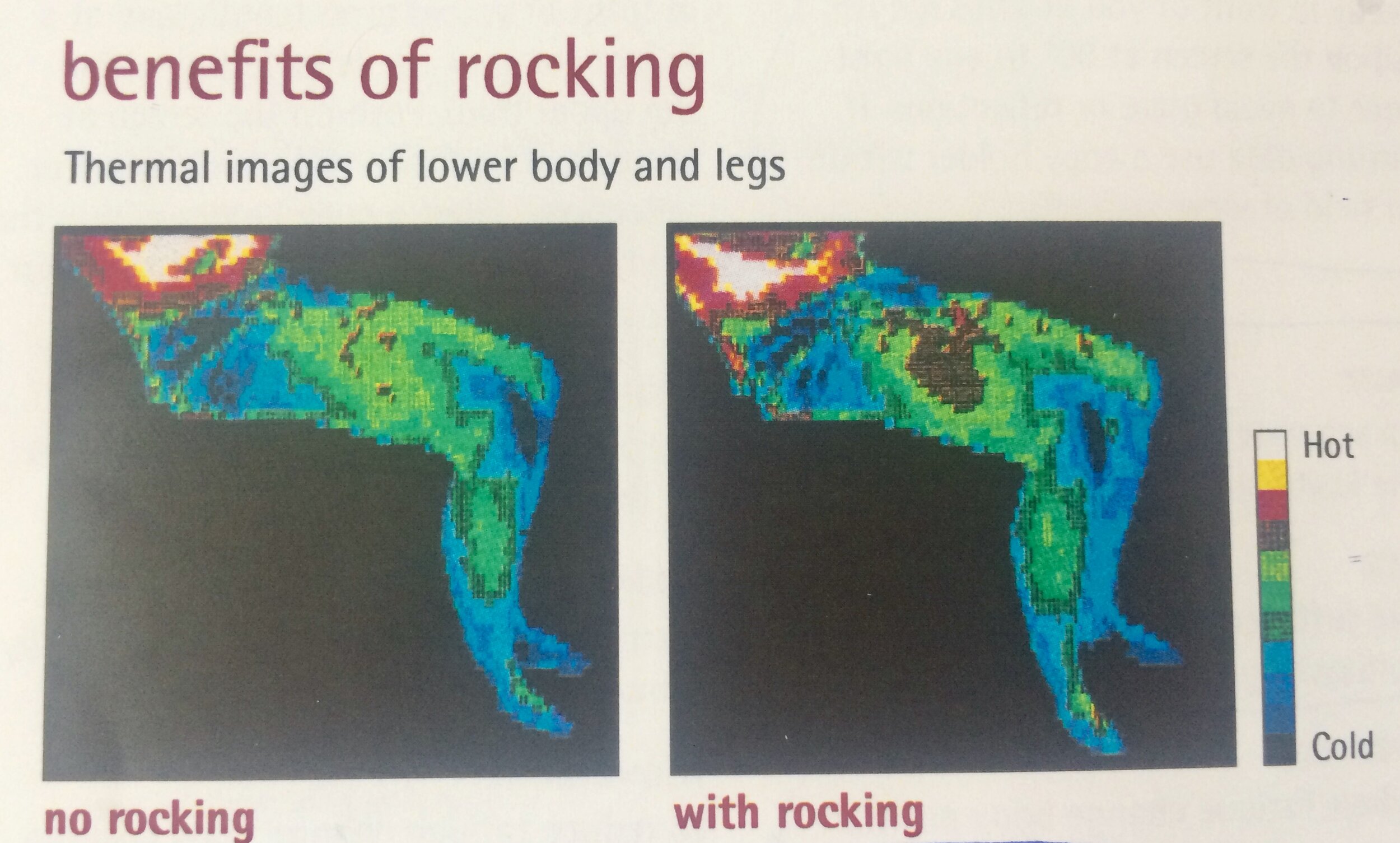Tips to sit comfortably while working from home
Last Thursday the government announced that the UK will be under lockdown for another 3 weeks, minimum. So, for those of you working from home, if your desk set-up is still not comfortable and you find yourself with neck, shoulder or back pain, it’s time to change it, as much as you can, to create a happy and comfortable space, where you can be productive. Below are tips on how to sit correctly and healthily and position your laptop, writing material and mouse to aid that.
The key to correct posture is control disc pressure
Reducing disc pressure encourages the spine to lengthen into its neutral ‘balanced’ position, as when standing.
To do this:
Sit well back into the chair to maintain support of the spine/pelvis (do not perch on the front of the seat)
Tilt your seat forwards to rotate the top of your pelvis so spine is in it’s natural ‘S’ shape.
Adjust your chair height so your hips are slightly higher than your knee.
Sit in a balanced upright posture with your head upright and balanced and in line with your bottom (do not slouch).
Move your chair closer to the desk so you avoid stretching/leaning your upper body forwards.
Hold your elbows relaxed by your side, level with your wrists. So your forearm is in a straight-line to the middle row of your keyboard.
Together, these will put less strain on your back and keep your abdomen toned, which helps to improve digestion. When balance is maintained, the lower back is kept strong and this reduces static loading on individual muscles. A correct posture can also help keep your breathing unrestricted because it forces you breathe deeper using your diaphragm and upper chest, resulting in more oxygen reaching the brain and muscles. Blood circulation improves too and which reduces fatigue and aids concentration.
Placing your equipment correctly takes off unnecessary pressure on your neck, shoulders and back
Dynamic imbalances of our body while sitting can become permanent through unconsciously adopting high risk postures whilst working.
To reduce the risk of this:
If you have a separate keyboard use it. But whether you use a separate keyboard or a built-in one, try to keep your forearm, write and fingers in as straight a line as possible.
If you’re using a separate keyboard and it has an inbuilt wrist rest, use it to minimise typing uphill so reducing the flexing of your hand and wrist backwards.
Try to find a desk-chair arrangement at home that best suits your and each other’s height. if you have a chair who’s height can be adjusted, use that and set it so it works for you. If the desk is too low, see if you can order desk raisers online. If it’s too high, use a foot stool and a higher chair so you can sit higher.
If you’re looking at a screen, ideally set it (or if you have a laptop/computer stand then the stand) so the screen is directly in front of you at arms length. Position the screen at 90o to any light source to avoid glare or reflections. If inputting date use a copy holder within your field of view.
If possible use a separate mouse and keep it within easy reach of the keyboard.
If you are multitasking, create sufficient room to work.
If you use a telephone for more than 40% of your working day then consider using a headset.
If you write, try and use a slope because this reduces the viewing distance, lessens eye strain and limits the amount your body will lean forward.
Movement prevents static loading
We are designed for movement. But for optimal function, this movement must be initiated by the right muscles. To move, the body takes the line of least resistance and if the correct muscles are too stiff then a more flexible group will be called upon to do it, often in a specific direction. But if this direction is biochemically unsound then a movement imbalance is generated and the area becomes a sight of pain.
Static loading is when certain muscles in the body work continuously to hold the body in position and it can cause serious problems. For example, with constant slouching over a desk, areas of the lumbar spine can become too flexible, so movement then comes from the lower back rather than from the hip and this causes lower back pain.
Active sitting can help prevent this but it must be done when the body is in its natural balanced position so dynamically-imbalanced movements do not occur. Active sitting is rocking or changing position regularly to reduce fatigue.
To do this:
Rock continuously in your chair 8 times. It will produce a 1C rise in the temperature of the quad muscles of the thigh, which indicates increased blood flow which will reduce muscle fatigue and help you stay alert.
Alternate position during the day.
Take breaks and vary tasks.





